Qin’s Life History 1940~1949
The Qin Xuanfu’s family photo in 1945
1940-1949
After the Anti Japanese War started, the Beiping National School of Fine Arts merged with HangZhou National School of Fine Arts and moved out of Beijing. Xuanfu traveled with the school from the northern part of China to the south and arrived in Chongqin, a city in southwest of China. During the war, Xuanfu worked for several schools and organizations in various positions, including as a specialist board member of the National Art Education Committee under the Ministry of Education, a board member of the Chinese Fine Arts Association, professor and dean of the Western Arts Department of the National School of Fine Arts , professor of the Fine Arts Department in Central University, and board member of the Chinese National Writer Association.
(Photos in Ruanling, Oil painting “The campus during the war”, Sketches in 1940: “Refugees”, “Go to the Jinning County Fair”, Mr. Wu Zuoren ‘s sketch “Qin Xuanfu”; the sketch “The portrait of Zhu Ziqing”,The oil painting “Entering the E-Mei Mountain”)
In 1946, Mr. Qin Xuanfu went to Mount E-Mei and Dujiang Dam to practice.
His painting “Entering the E-Mei Mountain” displays rich scenery; green mountains , mountains covered with heavy mist and fog, and an artist, carrying a large heavy painting case on his shoulder walking on the mountain trails. The painting is full of loving emotions and taste.
“Looking the Glacia from Golden EMei Peak” has a different style; the author was in the mountain, appreciating its scenery. He did not spend too many strokes on the details of the mountain, yet emphasized the sky above the peak, the sea of white clouds and the snowy mountains in the distance. . The color in the sky is changing to yellow from blue and vividly displays changeable lighting in the sky.
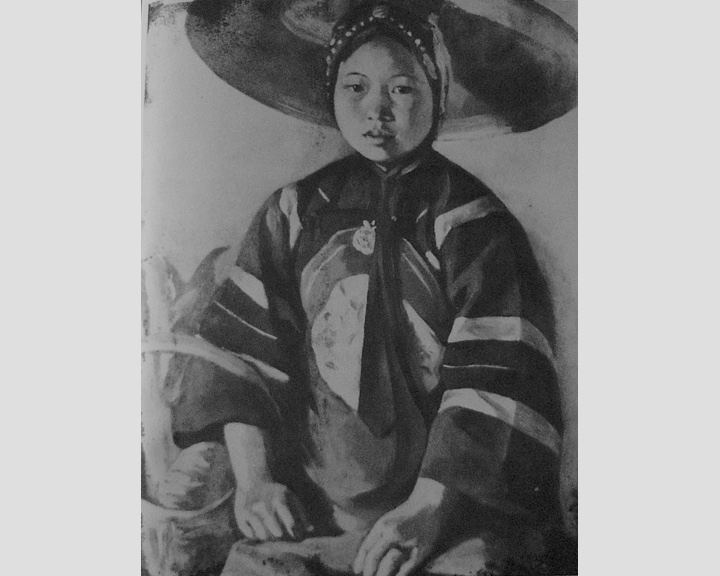
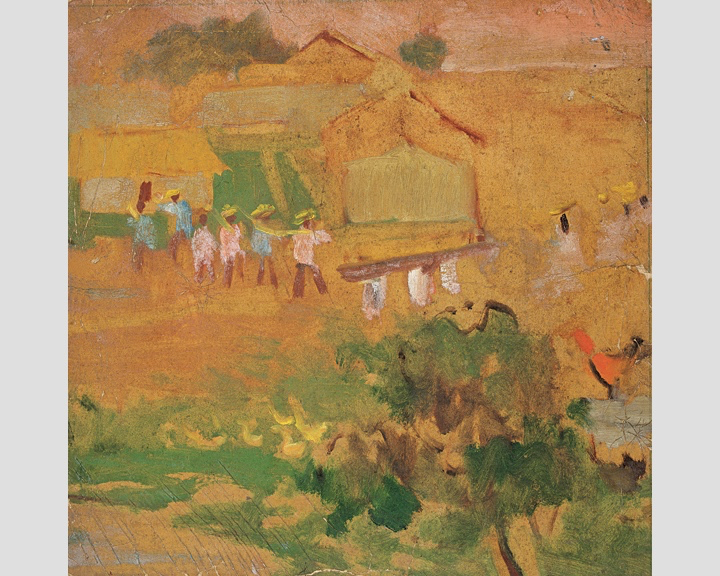
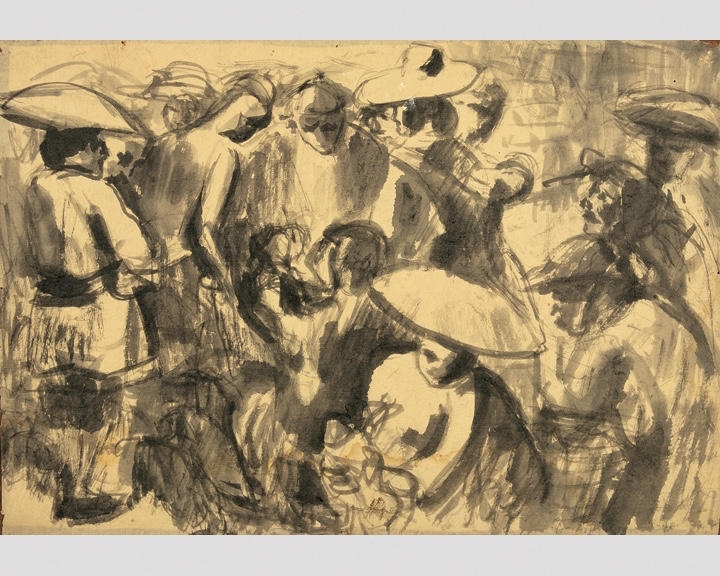
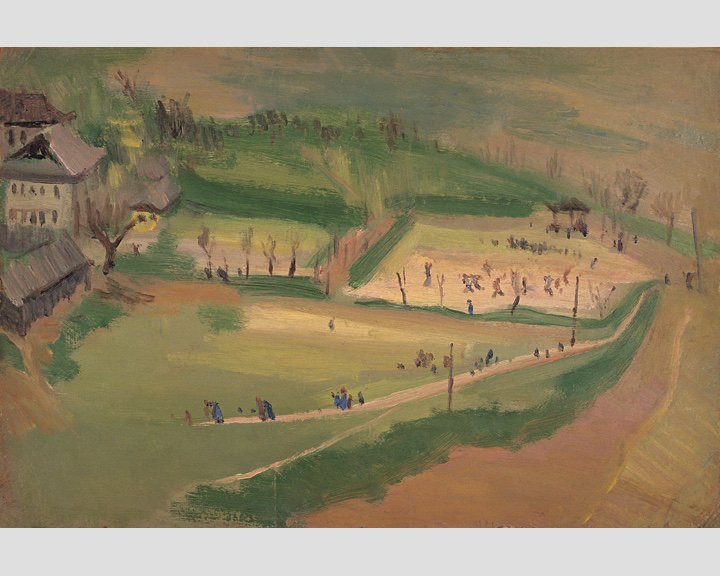
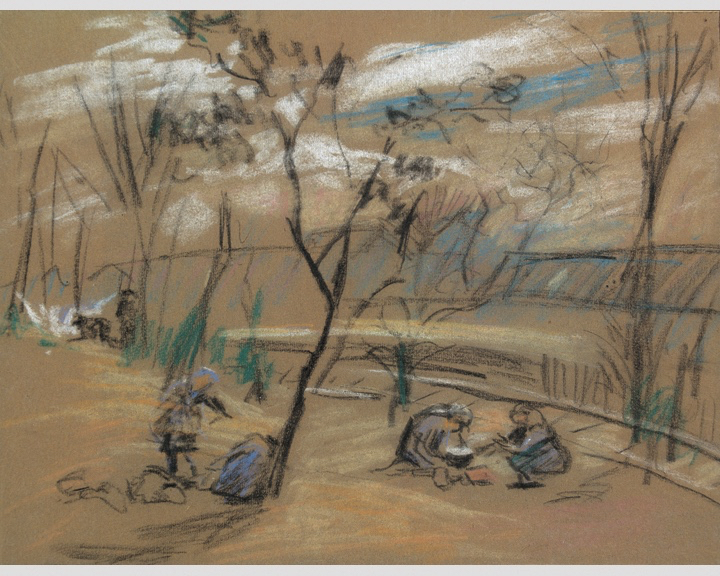
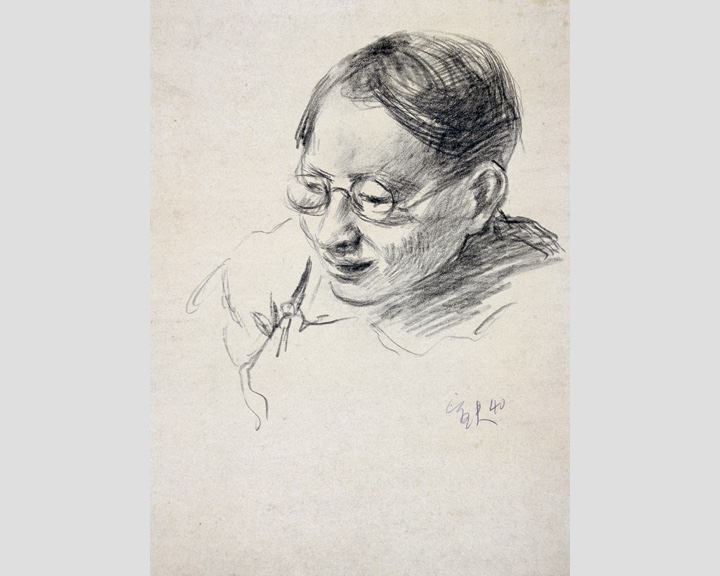
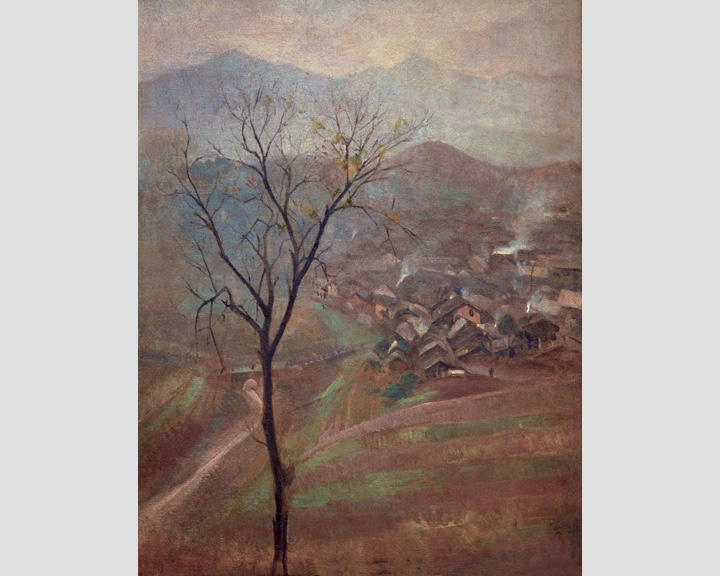
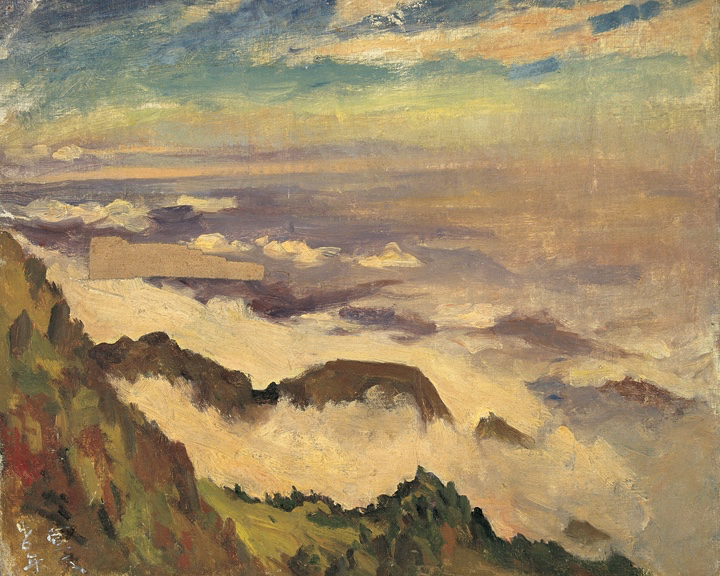
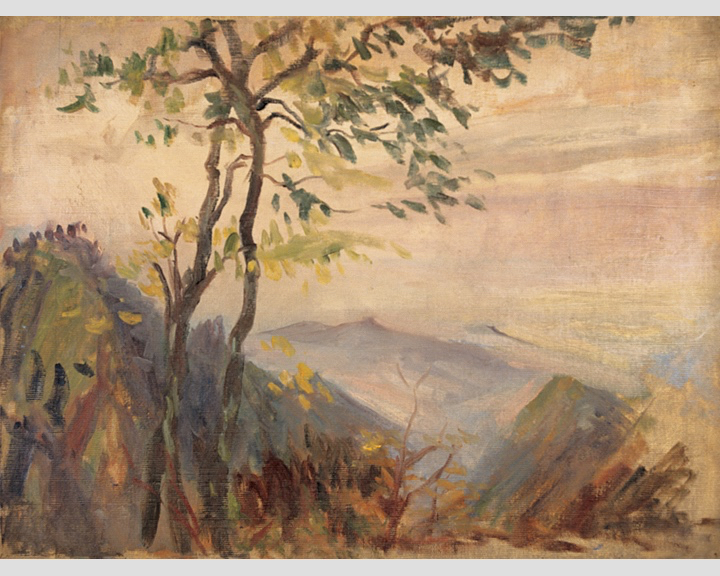
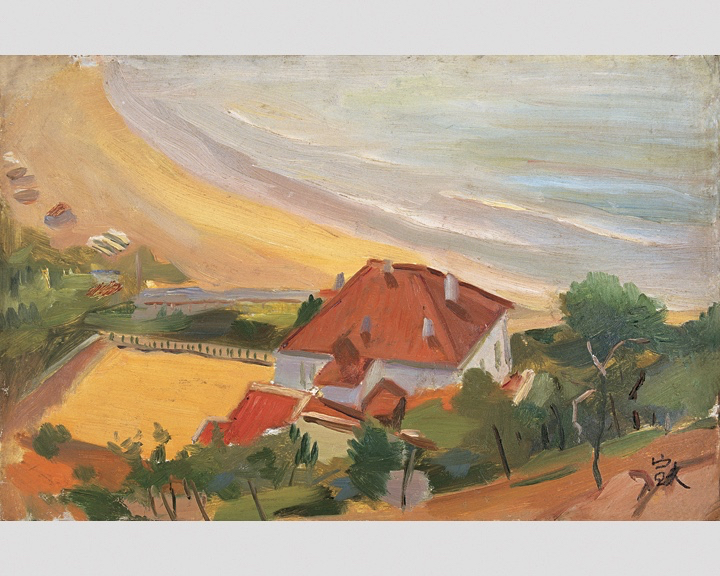
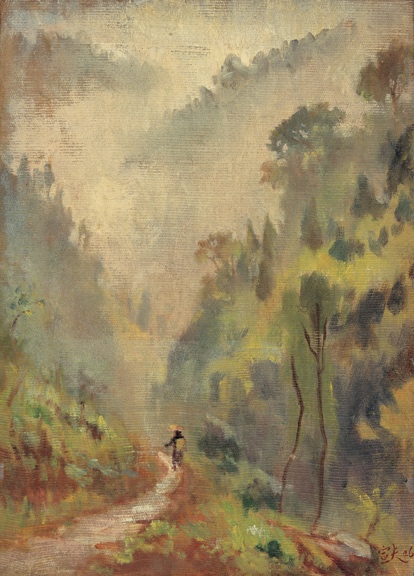
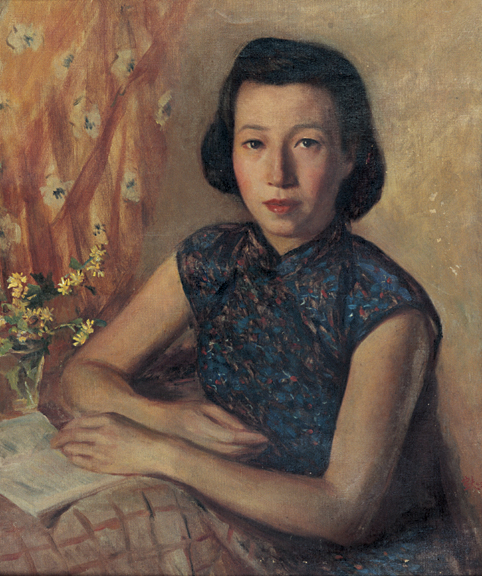
The Reward Roster of the 3rd Chinese National Art Exhibition in 1942
The oil painting “Mother Teacher” 1942
Manuscript of Qu Beihong for the “Qin Xuanfu Art Exhibition” 1945
Article commenting on Qin Xuanfu’s Exhibition published at Dagong Daily in Chongqing on Dec. 9, 1945.
1939 Photo in Ruanling, Hunan
Photo on Fenghuang mountain. From left: Chang Shuhong, Wu Zuoren, Huang Xianzhi and Qin Xuanfu
The recommendation letter from Xu Beihong for Qin to work at the Central National University
In “Mother Teacher” in which the artist, with originality, tried to express the sentiments of anti-Japanese war through an ordinary family scene a mother teaching her child, the triangle design, eye contacts, and gestures of the characters, draw our attention to “Our Air Forces”. There was not much decoration on the wall except the painting of a “Castle”, which added to the heaviness of the war climate. The character portraits were concise and detailed; the color of the skin and the attitude for mother and son are natural but full of life. Mr. Lu Sibai commented, “The structure is simple yet concise. The loving expression of the mother, the harmonious combination of light and shadow on the son’s face, and the simple but solid strokes, all composed a touching picture.”
This painting was chosen for the 3rd Chinese National Art Exhibition in 1942 and won the 2nd prize with no one winning the first prize.
(The oil painting “Mother Teacher”; The Reward Roster of the 3rd Chinese National Art Exhibition in 1942”)
In December 1945, Mr. Qin held his first personal art exhibition in Chongqin, China, and it was well received. Dagong Daily in Chongqing printed a special issue for the event and published many comments about the exhibition written by famous artists. Among them were Lin Fongmian, Xu Beihong, Fu Baoshi, Lü Sibai, Zong Baihua, and Wang Rizhang. Mr. Xu Beihong even presented his manuscript to Qin Xuanfu as a gift, which the Qin familiy has preserved ever since. Zhang Daofan, head of the National Art Committee at the time, also published a review for Mr. Qin’s paintings (December 9, 1945, p. 6).
(1945年合家照,徐悲鸿先生《秦宣夫画展》手稿、1945年12月9日重庆《大公报》)
(The Qin Xuanfu’s family photo in 1945; Manuscript of Qu Beihong for the “Qin Xuanfu Art Exhibition”, the articles commented on Qin Xuanfu’s Exhibition published at Dagong Daily in Chongqing on Dec. 9, 1945.)
1948年
In 1948, Mr.Qin went to city of QinDao, a harbor in Shangdong Province to get some experiences in landscape painting practice. His paintings at that time included “Red Roof in QinDao”,“Lobster”,“Little QinDao”, and some water color paintings, such as “Qindao Beach”, “Qindao Bay”, and “Qindao Scenery”.
The painting “Red Roof in QinDao” is bright and beautiful in colors, with strong contrast and free, easy strokes. It was selected for the Chinese Oil Painting Exhibition in Twentieth Century in 2000, and it was published in the Chinese Oil Painting Collection in Twentieth Century.
(The oil painting “Red Roof in Qindao”)
“Lobster” is another painting with rich and attractive colors. The sharp lighting contrast between the red lobster as major object and the well decorated black tea pot as background, has made the theme more prominent. Strokes are free, easy and full of life.
(The oil painting “Lobster”)
“The Little Qindao” was painted during that period of time, and later was selected for the first art exhibition of the People’s Republic of China held in 1953.
The oil painting “Lobster” 1948







